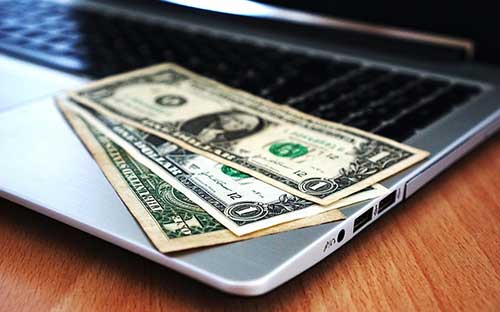
The Life on a Dime household did participate in no-spend February and Minimalism in March, despite the glaring lack of activity on the blog or its social media. This post will serve as a super quick update for both. 2024 NO SPEND FEBRUARY UPDATE Rule One: Limited Eating Out – We limited ourselves to going out only twice in February. …
The post 2024 NO SPEND FEBRUARY & MINIMALISM IN MARCH UPDATE appeared first on a life on a dime.

Cutting costs on Christmas toys
The cost of living crisis hasn’t gone away and nor has Christmas. Yet the pressure to buy presents, especially toys for children, remains constant. Black Friday may provide cheaper deals but in recent years we have seen more stores opting out and others not being true bargains. But often you can find some good discounts on toys around this time
In my job as a consumer expert I have been researching what is available and provides a round-up of how, when and where to bag some toy bargains:
- Argos currently has up to 50% off a selection of toys and up to 25% off selected Lego kits.
- Following on from previous years, MoneyCentral predicts that Smyths will have “Black Friday” sale starting on the 16th November for 6 days. Usually there are some popular toy branded toys and baby items with up to 50% discount.
- Look out for clearance and outlets. For example, Smyths, Argos and The Works have clearance sections on their sites that run all year round. Many retailers use eBay to sell clearance items and Amazon’s Warehouse offer “Used” or “open-box” items and the outlet section has new but overstocked items.
- Black Friday runs from the 29th November until Cyber Monday 2nd You may be able to find bargains on Amazon during this time. But check for previous prices on Camel Camel Camel. You can also set up trackers on this site to alert you when the price drops.
- The Tesco half price toy sale usually runs three times a year. The next one should be December, to pick up those last minute bargains.
- Look on eBay and Facebook marketplaces for second hand toys. Many people keep boxes and you can often find toys, particularly for the younger age groups, in excellent condition.
- Sign up to emails from stores that sell toys which will give you early notice of when sales start.
- Buy toys in the January sale. You know how old the child is going to be in a year’s time and you can get some huge savings in the New Year, after the Christmas rush is over.
- Look for toys that have been discounted due to damaged boxes, cosmetic scratches etc, such as at Amazon Warehouse and eBay. Adventure Toys sell discounted Little Tikes returns. Marthill International sells pallets of mail order returns made up of box damaged, bag damaged, faulty items and change-of-mind returns. They can be discounted up to 85%, so you could sell some on and/or split the cost with friends.
- Jam Doughnut offers pre-payment gift cards to use online, instore or on the phone and earn reward points which accumulate. Once you have received £10.00 worth, you can take out the cash.
- Look at the Google shopping tool which can help you to find alternative sellers for the presents you are seeking. Use price comparison sites such as Pricerunner and Idealo. These scan the well-known and lesser-known online stores for the price on the same item.
- After finding the cheapest price then use a cashback site. It is free to register with them, These will give you money back on purchases when you shop online. The main ones are TopCashback* and Quidco* which are the main ones and for your child’s nominated child’s bank account, consider Kidstart*which puts money into your nominated child’s account. You can claim back money just by clicking through to your online shop store, if it is registered with the site.
- Download the Honey app which will automatically check for discount codes on retailer sites that you visit. Be aware that the cashback sites may not accept an unapproved discount code.
- Use the Mad About Money app to find recommendations for other money specialist apps and get the discount at the point of purchase from various retailers.
- Each Tuesday, you can usually save up to 40% at The Disney store in its “Toy Tuesday” sale which usually runs for 48 hours. This offers discounts on a variety of Disney toys, action figures and playsets. Different deals are provided each week and are online only.
- Boots £10 Tuesday has some great baby-related bargains weekly, with numerous items reduced to £10, including toys, Discounts range from 10% to 20%, with some reductions even higher.
- Although Zavvi is known for its entertainment products, it also sells toys and collectibles, many of them with discounts, including exclusives.
- Look at lesser-known retailers that sell toys. For example, Studio is currently selling toys for up to 70% off And Very for up to 50% off. Also check stores that might be considered as more expensive, such as Hamleys which holds seasonal sales throughout the year. It currently has 25% off Lego, 30% off Playmobile and up to 25% on other toys.
- You may be entitled to further discounts according to your status and in most cases you will be able to use these discounts combined with store deals. Unidays, Totum and Student Beans provide discounts for students at a wide range of stores, meals out, deliveries, etc. and include retailers like Argos that sell toys. Sign up with a school/college/uni email address.
- If you are disabled you can find discounts from a wide variety of companies at Purpl. It is the UK’s first discount site devoted to helping with the cost of living with a disability.
- The Blue Light card provides discounts for emergency workers, teachers, armed forces and more.
- Consider craft sets which are often discounted at retailers such as Hobbycraft, with offers of 3-for-the-price-of-2 and up to 50% discount off some kits.
- Finally Don’t take the children Christmas shopping! They will just see more things that they “want“. This will add to the pressure and stress on you. Try to work out reciprocal arrangements with your friends and their children to go shopping.
Further help with Christmas shopping
See Saving money and your rights at Christmas numerous posts on saving money on all aspects of Christmas, gifts, food, cards, decorations and more.
Christmas Shopping: Know your rights.
* Affiliate link
The post How to cut costs on Christmas toys appeared first on The Complaining Cow – Consumer Rights, Complaints and Customer Service Expert.

Setting financial boundaries is key to reducing money stress and enhancing your overall well-being. Learn how to establish clear limits on spending, say ‘no’ with confidence, and protect your financial health for a happier life.

I spent 5 days in New York and along the way, I saw monuments, museums, and Broadway shows too. What I didn’t do was pay over $3,000 for the trip.
I leveraged every ounce of my frugal ways to save money where it didn’t matter and splurge where it did.
The result was a trip that was bountiful in terms of experiences and low in cost.
The post 5-Day NYC Adventure: Big Experiences on a Budget appeared first on Budget Life List.

Recently someone asked me, “When did this bull market start?” It’s a great question because it can provide insight into whether the market is getting overextended.
Of course, bull markets have no specific length or expiration date. We can’t predict that there is “only X years” left in the current bull market. On the other hand, we also know that they don’t last forever. Some event will come along and eventually put an end to the party.
So where might we be in that cycle?
Before we answer that question, let’s think about what defines the beginning and end of a bull market.
When Does a Bull Market Begin & End?
Though there is no widely agreed upon definition, I’ve seen the following beliefs about when a bull market begins:
- After a 20% rally from the lows
- After a huge surge in optimism among investors (e.g. a big jump in investor sentiment)
- Multiple months of price increases
And, if we assume this is when a bull market begins, then a bull market ends when the opposite occurs:
- After a 20% decline from all-time highs
- After a huge surge in pessimism among investors (e.g. a large decline in investor sentiment)
- Multiple months of price decreases
While all of these conditions work, my philosophy for when a bull market begins and ends is based on what I like to call a “clearing event.” I would define a clearing event as any time when there is a significant decrease in both stock prices and investor sentiment. In other words, it’s all of the conditions above at the same time.
If you accept my clearing event idea, then a bull market would begin when we recover from a clearing event and an end when a new clearing event comes around.
Let’s run this logic from when I started investing in July 2012 to determine whether we had any clearing events.
Were There Any Clearing Events Since 2012?
Back in 2012, we were in the earliest stages of a bull market following the recovery from the GFC, a massive clearing event. Since then, I’ve seen the following declines in the U.S. stock market:
- Late 2015 (-12%)
- Early 2016 (-10%)
- Late 2018 (-18%)
- Early 2020 (-33%)
- 2022 (-25%)
Were any of these “clearing events”? For the most part, no.
The late 2015 and early 2016 declines were your typical run-of-the-mill intrayear pullbacks. These kinds of dips happen almost every other year, on average. The late 2018 drop was bigger, but also didn’t signal a massive shift in sentiment, so that wasn’t a clearing event either.
Now here is where I am going to lose some of you. The early 2020 COVID-related decline also wasn’t a clearing event. Though the market was down 33% at one point and the world was in panic, we avoided what would’ve been a large clearing event because the U.S. government stepped in with monetary and fiscal stimulus. And since the decline and recovery was so fast, the bull market continued unabated.
This explains why 2020 was an up year for U.S. stocks and why the S&P 500 saw a 76% return (not including dividends) from March 2020 to March 2021. That’s the 3rd greatest 1-year return in U.S. stock market history. The only two years which were better both occurred during the recovery from The Great Depression in the 1930s.
This leaves us with just one clearing event since I started investing in 2012—the 2022 decline. Let’s see why this decline officially ended the 2010s bull market.
Why 2022 Ended the 2010s Bull Market
The 2022 decline was not like any of the others over the past decade. Not only did stocks fall by 25%, but investor sentiment went with it. Investors started caring about profits as the Fed raised rates and there was a massive shift in expectations as a result.
You can see this clearly when you look at what happened to a lot of the big tech companies in 2022. Their prices fell of a cliff. For example, consider what happened to Meta, Amazon, and Netflix relative to the S&P 500 over this time period:
For these tech companies, the 2020 COVID decline barely registers in the chart above. Relative to 2022, it’s hard to tell it even happened. This is why 2022 was a clearing event and 2020 wasn’t. 2022 put an end to the decade long bull market of the 2010s.
Normally, such an end to a bull market would’ve lasted longer. I would’ve expected it to take at least a few years after 2022 before stocks turned around. But something happened in late 2022 that changed all of this.
ChatGPT: The Beginning of a New Bull Market
In November 2022, OpenAI launched ChatGPT which laid the foundation for our current bull market.
Without a doubt, this is what pulled us out of the late 2022 slump and started the rally we are still experiencing today. You can see this if you look at Meta, Amazon, and Netflix’s returns since the 2022 bottom:
Since the launch of ChatGPT, Big Tech has added over $8 trillion in total market cap. Because of this, it can feel like the 2022 decline never happened. But it did and it would’ve likely lasted longer had it not been for the launch and widespread appeal of generative AI.
So when people ask me when the bull market started, I have no choice but to say November 2022. This AI-fueled rally is what is holding up the market. And if the promises of AI fail to materialize, then much of the gains we’ve seen since November 2022 will likely go with it. Therefore, the bigger question is: how long can this AI rally last?
Unfortunately, I don’t know. There are people in the AI space who think that this is just the beginning. And there are others who are a bit skeptical of AI’s promise. I won’t provide my opinion because I simply don’t know enough about the discussion. In a Buffett-esque style response, it’s outside my circle of competence.
Either way, I didn’t write this post to tell you when this bull market will end. I wrote it to tell you that a new bull market has begun. This isn’t the stock market of the 2010s anymore, which means it’s anyone’s guess how long it might last. And, believe it or not, whoever wins the U.S. election today won’t impact the market as much as you think.
With that being said, happy voting and thank you for reading!
If you liked this post, consider signing up for my newsletter.
This is post 423. Any code I have related to this post can be found here with the same numbering: https://github.com/nmaggiulli/of-dollars-and-data

The typical scenario is that you get your paycheck. After you recover from the shock at how little is left after taxes, you divide it among all your outstanding bills, intending to put whatever is left over into your savings. Do you pay yourself first?
But nothing seems left over, and your savings don’t grow.
A better plan would be to pay yourself first. Don’t let the money get into your hands.
You might find that you begin to grow your savings much quicker.
If you work for an employer with a 401K plan, you should fund it to the max. If you can’t afford that, at least put enough in to get the full matching contribution from your employer.
This investment is made before taxes. Your investment is larger, and the employer’s contribution grows quickly.
Next, have a brokerage or mutual fund company debit your banking account monthly. This money should first go into an IRA – if you have five years or more to go to retirement, make it a Roth IRA.
Next, debit a few more dollars into a no-load, low-cost mutual fund. The younger you are, the more aggressive your fund choice can be.
After that, figure out how to pay your bills and living expenses. If money is tight, cut back on your living expenses and use the extra money to pay down your debt.
Start with the lowest balance first. Once that debt is paid, take the amount of money you were paying on that debt and add it to the payment on the next lowest balance debt. Continue doing this, and you can be debt-free within 5 to 7 years.
Another version of this method is paying the highest interest rate debt first. The principle is the same; you see more progress with the first method, although it could be more costly based on how your debt is distributed.
(If you don’t believe me, get the premier version of Quicken and use the “Debt Reduction” module. You will be shocked at how much money you save and how quickly you can eliminate debt this way.) You can also get more information on debt reduction HERE.
The idea is to scrimp at the expense of your current lifestyle while leaving your savings to grow and your debt to shrink.
Many people reading this will scream that this is an impossible plan.
But it is quite doable with a little willpower and the ability to delay gratification for a while.
The problem is that if you don’t do this, your future might be very bleak.
The post Do You Pay Yourself First first appeared on Kirk G. Meyer.

Back in May, I wrote a post called The Next Mission… Free Cruises Through Casino Status Matches! It was all about how we stumbled upon a way to get free cruises and what we planned to do to make it happen. Well, here we are several months later and I realized it’s time to update you on how it’s going and what’s next. It’s actually been a cool little adventure figuring out what we need to do and then taking […]

When it comes to finding the best price on your Thanksgiving Turkey, we have you covered. Once again this year, we’re rounding up the best turkey prices at grocery stores across the nation! NOTE: Check back frequently as stores are marking prices daily. Those with updated 2024 means we have posted the current price. Best…
The post Best Turkey Prices For 2024 appeared first on Well Kept Wallet.

Remote work isn’t just a new trend—it’s become a way of life for so many of us. Sure, it’s great to say goodbye to the daily commute and hello to later mornings in bed, but there’s way more to it than that. Working from home brings a lot of freedom, but with that freedom comes a set of new challenges.
Staying motivated? Managing your time? Finding the right balance between work and life? These aren’t always as easy as they sound.
Create A Space That’s Just For Work
When you’re working remotely, it’s all too easy to float between the couch, the kitchen table, or even your bed (tempting, right?). But if you want to stay productive and focused, you need a dedicated workspace. Think of it as your “office” at home. It doesn’t have to be fancy—a small desk in the corner of a quiet room can make a world of difference.
This space signals to your brain, “This is where work happens.” And when you step away, it’s much easier to leave work behind, too. Set it up with a comfortable chair, a well-positioned monitor, and maybe a touch of décor that makes you feel good. Suddenly, you’re not just at home; you’re at work, and that subtle shift helps create the focus you need.
Set Boundaries And Stick To Them
Now that your workspace is set, it’s time to think about boundaries. Remote work often blurs the lines between professional and personal time. Have family members or roommates who tend to pop in with questions or just to chat? Let them know your working hours—gently but firmly. It’s not about shutting people out but about carving out the focus time you need.
And here’s the thing: you’ve got to stick to these boundaries yourself. This means no peeking at emails during “off” hours and resisting the urge to do a quick load of laundry during the day. Creating these clear divisions makes it easier to focus and actually helps you enjoy your downtime more when the workday ends.
Take Control Of Your Time And Prioritise Like A Pro
In an office, structure is a given—there are meetings, coffee breaks, and people walking around. But remotely? You’re in charge of your own flow. This is where time management becomes a superpower. Start each day by writing down your top priorities. What’s the one thing you need to accomplish today to feel satisfied? Let that be your north star. Once you know your priorities, consider using a time-management method like the Pomodoro Technique (work for 25 minutes, take a break, repeat).
Make Communication A Habit, Not An Afterthought
When you’re not face-to-face with your team, staying in the loop takes more than just replying to emails. Remote work relies on clear and consistent communication, so you have to go the extra mile to connect. Use chat tools to keep conversations flowing. Video calls might not be everyone’s favourite, but they’re valuable for certain discussions where you need a little face time.
Regular check-ins—whether weekly or biweekly—are also important. They help keep you aligned with your team and give you a chance to catch any misunderstandings before they snowball. Communication is like oil in the gears of remote work; without it, things start to creak.
Be Smart With Your Security
When you’re working remotely, you’re likely accessing company info on your home network or even public Wi-Fi. That can open doors to security risks. This is where a VPN for remote work can really help tighten up your security. A VPN (Virtual Private Network) protects your data by encrypting your internet connection, keeping sensitive information safe from cyber threats.
Not only does a VPN add an extra layer of security, but it can also stabilize your internet connection by routing data through optimised servers. With a VPN in place, you’re free to focus on the task at hand without worrying about digital snoops or data breaches.
Practice Self-Care And Take Breaks Without Guilt
One of the most underrated aspects of remote work success? Self-care. When your office is your home, it’s all too easy to slip into the habit of working longer hours or never truly “clocking out.” To avoid burnout, give yourself permission to take breaks—yes, without guilt. Little pauses keep your energy up and help prevent mental fatigue.
Conclusion
Remote work? It’s more than just gaining a little freedom. It’s about shaping your days with the perfect mix of flexibility and focus, allowing you to truly thrive. Imagine waking up each day and deciding not only where you’ll work but also how you’ll make it productive and meaningful. This is your chance to craft a work-life rhythm that suits you, no matter where you are.

POV: You just graduated. Yay! You’re now ready to take on more challenging roles, aka earn serious money. You’ve sent out resumes for every entry-level position you see on the internet, and at the same time, you wonder whether you will be hired. Sounds familiar? I know it all too well because I’ve been there….
The post 8 High-Paying Jobs That Require Little or No Experience appeared first on FinSavvy Panda.
